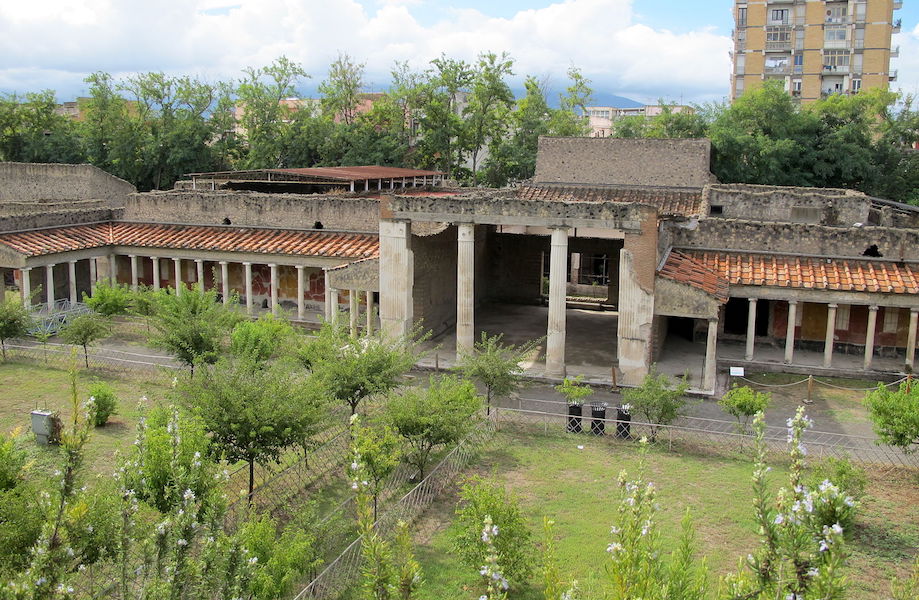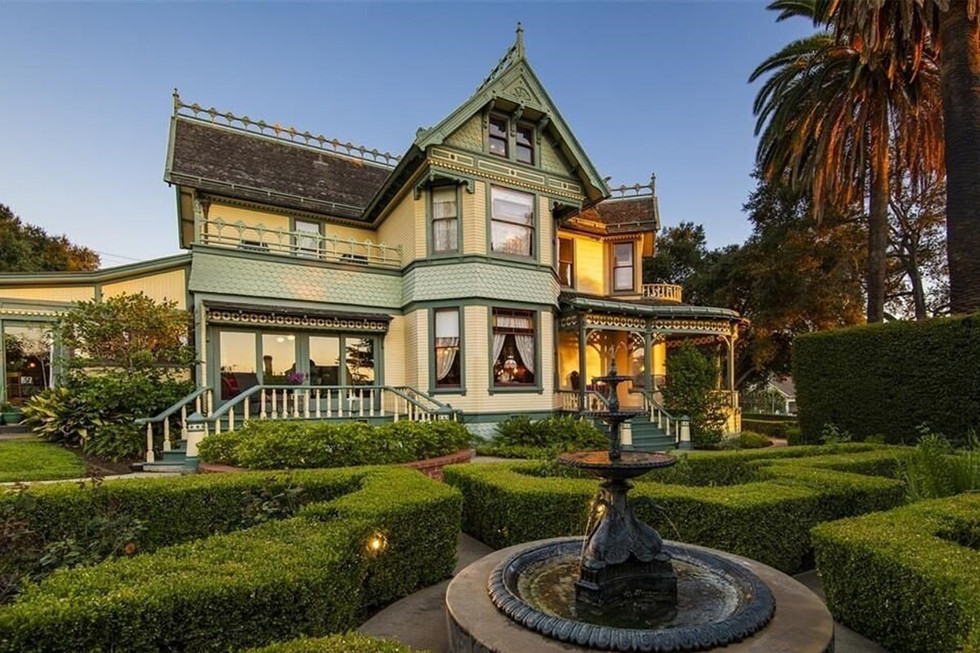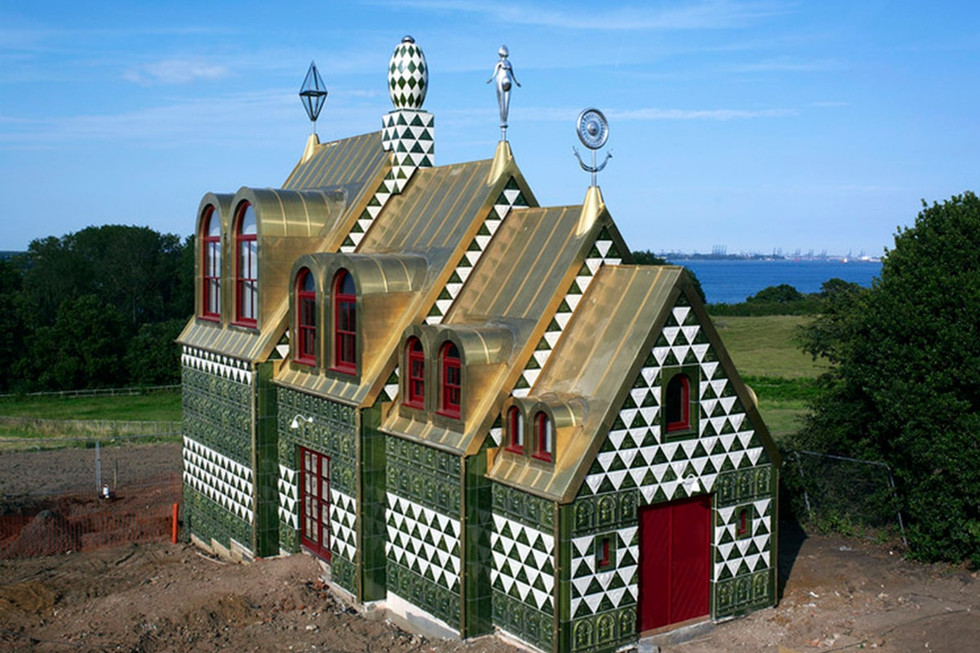Guide to Architectural Styles
- Abdul Karim
- Sep 26, 2022
- 17 min read
Updated: Oct 9, 2022
What is an architectural style?
An architecture style is a collection of external influences that shape the materiality, method of construction, and form of a building, helping it to be identified and characterized in both historical and design terms.
Most architecture styles develop, and in a lot of cases become superseded over time, as changing fashions, technology, religions, beliefs and materials advance, creating new opportunities and evolving new styles
Buildings first evolved as early civilizations developed, often independently, in scattered locations around the globe, from a need for shelter, security, places for worship, places for congregation etc.
Using the available materials, space and skills gave rise to a mixed very mixed architecture style that was often a combination of timber cut from local forests and stone hewn from local rocks.
Neolithic ‘architecture’ included not just housing for shelter, but also tombs, religious buildings, symbolic structures and monuments such as megaliths found in Europe and the Mediterranean. Some of these structures were very elaborate. Building materials included; mud brick, skins, textiles, wattle and daub, stone and timber.
The world’s oldest known engineered roadway, the Sweet Track in England, also dates from this time
Mesopotamia is ancient architecture of the region of the Tigris–Euphrates river system encompassing a number of distinct cultures.
Among its accomplishments are the development of complex urban planning systems, building styles such as the courtyard house, and ziggurats, and stepped pyramids built as part of temple complexes.
Ancient Egypt was not one stable civilization, and experienced constant change and upheaval that lead to a varied set of architectural styles.
The Ancient Egyptians developed great architectural monuments, the most famous being the Great Pyramid and the Great Sphinx of Giza. Due to Egypt’s location, buildings and monuments were predominately constructed using hardened mud bricks and limestone, as a result of there being a scarcity of wood.
Many of the buildings would be aligned astronomically and built by slaves
Ancient Greek architecture is best known from its temples, as well as developing civic, and religious ideals. Its diverse range of public buildings, ranging from open-air theatres and public squares to public monuments. Architectural design adopted highly formalized decorative and structural characteristics, with a clear evolution of architectural style through three defined orders; Doric, Ionic and Corinthian.
Ancient Roman architecture adopted some of the external language of classical Greek architecture with a similar emphasis on civic buildings, but was different from Greek buildings, becoming a new architectural style.
It was renowned for its vast range of iconic building types, such as; temples, baths, villas, amphitheaters, palaces and circuses.
Roman architecture developed important structural elements such as arches, vaulted ceilings and domes, that were typically strong and well-engineered, using concrete.
This lead onto the development of unprecedented civil engineering projects such as bridges, aqueducts and roads.
Byzantine architecture was a continuation of Roman architecture, but with influences from the Near East. Buildings increased in geometric complexity, the classical orders were used more freely and the Greek cross plan was adopted in church architecture which often included complex dome structures supported by massive piers.
Moorish architecture is the articulated Islamic architecture of North Africa and parts of Spain and Portugal, where the Andalusians (Moors) were dominant between 711 and 1492.
Characteristic elements of Moorish architecture include muqarnas, horseshoe arches, voussoirs, domes, crenellated arches, lancet arches, ogee arches, courtyards, and decorative tile work known as zellij in Arabic or azulejo in Spanish and Portuguese.
Hoysala architecture is the building style developed under the rule of the Hoysala Empire, in the region known today as Karnataka, a state of India. Hoysala influence was at its peak in the 13th century, when it dominated the Southern Deccan Plateau region.
Romanesque architecture is an architectural style of medieval Europe characterized by semi-circular arches. In the 12th century it developed into the Gothic style, marked by pointed arches. Examples of Romanesque architecture can be found across the continent, making it the first pan-European architectural style since Imperial Roman architecture.
Norman architecture is a categorized style of Romanesque architecture developed by the Normans. In particular the term is traditionally used for English Romanesque architecture. The Normans introduced large numbers of castles and fortifications including Norman keeps, and at the same time monasteries, abbeys, churches and cathedrals, in a style characterized by the usual Romanesque rounded arches and especially massive proportions compared to other regional variations of the style.
The Mudéjar style, a symbiosis of techniques of building and decoration, where Moorish and European cultures met. It is characterized by the use of brick as the main material, in particular for bell towers. Mudéjar did not involve the creation of new shapes or structures, unlike Gothic or Romanesque, but applied the elements of Islamic and Jewish art and architecture to medieval and renaissance Christian architecture.
Gothic architecture emerged in the 11th and 12th centuries in Europe. It was characterised by an emphasis on the vertical, with increasingly tall buildings, featuring almost impossibly thin stone structures, pointed arches and ribbed stone vaults, interspersed with expanses of glass, and supported by external flying buttresses.
Sondergotik (Special Gothic) is the style of Late Gothic architecture prevalent in Austria, Bavaria, Saxony and Bohemia.
Sondergotik showed an attention to detail both within and without. In many Sondergotik buildings, fluidity and a wood-like quality were stressed in carving and decoration, particularly on vaults. Outside, the buildings tended towards mass buttressing.
Renaissance architecture emerged in Europe, where there was a revival of interest in the classical antiquities and an emergence of new scientific understanding. It was noted for its clean lines, symmetry and proportion, reminiscent of the architecture ancient Rome, with the use of columns, pilasters and lintels, arches and domes. An understanding of perspective also led to more conscious composition of architectural form.
The Tudor architectural style is the final development of medieval architecture in England, and also the tentative introduction of Renaissance architecture. In the much more slow-moving styles of vernacular architecture “Tudor” has become a designation for styles like half-timbering that characterize the few buildings surviving from before 1485 and others from the Stuart period. Manueline
During the High Renaissance, concepts derived from classical antiquity were developed and used with greater confidence, expanding the applicability of classical architecture to contemporary buildings.
Mannerism, also known as Late Renaissance, is a style in European art that emerged in the later years of the Italian High Renaissance around 1520.
The style is notable for its intellectual sophistication as well as its artificial qualities. It favors compositional tension and instability rather than the balance and clarity of earlier Renaissance painting.
Baroque architecture was a more theatrical version of Renaissance architecture, with dramatic lighting and colour, illusory effects such as trompe l’oeil, and designs that played games with architectural features, sometimes leaving them incomplete.
Its buildings typically include central towers, domes, portico or other central projections in the main façade. As Baroque architecture coincided with European colonialism, it is a style that can be seen throughout much of the world.
Palladian architecture is a European style of architecture derived from and inspired by the designs of the Venetian architect Andrea Palladio. Palladian designs were based on the symmetry and perspective of the temples of the Ancient Greeks and Romans. It was characterised by the use of pediments and symmetry, and proportions that were based on mathematics rather than ornament. Palladian architecture is recognisable for its classical facades.

The Georgian style is highly variable, but marked by symmetry and proportion based on the classical architecture of Greece and Rome, as revived in Renaissance architecture.
In the United States the term “Georgian” is generally used to describe all buildings from the period, regardless of style; in Britain it is generally restricted to buildings that are “architectural in intention”, and have stylistic characteristics that are typical of the period, though that covers a wide range.
Derived from Palladian architecture, Neoclassical has references to classical Greek and Roman architecture. It has a flat, planar quality, emphasising the wall and the separation of elements.
Notable examples of neoclassical architecture include the White House in Washington and the Bank of England in London.
Gothic Revival was an architectural movement that began in England. Its popularity grew rapidly in the early 19th century, when increasingly serious and learned admirers of neo-Gothic styles sought to revive medieval Gothic architecture, in contrast to the neoclassical styles prevalent at the time. Gothic Revival draws features from the original Gothic style, including decorative patterns, finials, lancet windows, hood molds and label stops.
Federal-style architecture is the name for the classicizing architecture built in the newly founded United States. The name Federal style is also used in association with furniture design in the United States of the same time period. The style broadly corresponds to the classicism of Biedermeier style in the German-speaking lands, Regency architecture in Britain and to the French Empire style.
Russian revival is the generic term for a number of different movements within Russian architecture that was an eclectic melding of pre-Peterine Russian architecture and elements of Byzantine architecture.
The Russian Revival style arose within the framework that the renewed interest in the national architecture, and it is an interpretation and stylization of the Russian architectural heritage.
Victorian architecture is a series of architectural revival styles. Victorian refers to the reign of Queen Victoria (1837–1901) in England, called the Victorian era, during which period the styles known as Victorian were used in construction. However, many elements of what is typically termed “Victorian” architecture did not become popular until later in Victoria’s reign. The styles often included interpretations and eclectic revivals of historic styles.
Romanesque Revival is a style of building inspired by the 11th- and 12th-century Romanesque architecture. Unlike the historic Romanesque style, however, Romanesque Revival buildings tended to feature more simplified arches and windows than their historic counterparts.
Swiss chalet style is an architectural style of Late Historicism, originally inspired by rural chalets in Switzerland and the Alpine regions of Central Europe. The style refers to traditional building designs characterized by widely projecting roofs and facades richly decorated with wooden balconies and carved ornaments.
The Arts and Crafts movement was an international movement in the decorative and fine arts that began in Britain and flourished in Europe and North America, emerging in Japan (the Mingeimovement) in the 1920s. It stood for traditional craftsmanship using simple forms, and often used medieval, romantic, or folk styles of decoration.
Beaux Arts refers to the style taught first at the Académie royale d’architecture from 1671 –1793, and then from 1795 at the École des Beaux Arts in Paris. It was a heavily decorative style characterized by symmetry, flat roofs, arched windows and doors and classical details.
The Queen Anne style in Britain refers to either the English Baroque architectural style approximately of the reign of Queen Anne
In British architecture the term is mostly used of domestic buildings up to the size of a manor house, and usually designed elegantly but simply by local builders or architects, rather than the grand palaces of noble magnates. Contrary to the American usage of the term, it is characterized by strongly bilateral symmetry with an Italianate or Palladian-derived pediment on the front formal elevation.
The American Renaissance was a period of American architecture and the arts characterized by renewed national self-confidence and a feeling that the United States was the heir to Greek democracy, Roman law, and Renaissance humanism. The era spans the period between the Centennial Exposition celebrating the 100th anniversary of the signing of the Declaration of Independence and the United States’ entry into World War I.
Art Nouveau was symptomatic of a struggle between the old and the new. Whilst it rejected some of the revivalist styles of the 19th century, it did adopt some of the elements of Rococo, with organic forms and applied art typified by Hector Guimard’s Paris metro entrances. Notable exponents of art nouveau in architecture include Mackintosh and Gaudi.
Modern architecture, or modernist architecture was based upon new and innovative technologies of construction, particularly the use of glass, steel and reinforced concrete; the idea that form should follow function; an embrace of minimalism; and a rejection of ornament
Prairie School is most common to the Midwestern United States. The style is usually marked by horizontal lines, flat or hipped roofs with broad overhanging eaves, windows grouped in horizontal bands, integration with the landscape, solid construction, craftsmanship, and discipline in the use of ornament. Horizontal lines were thought to evoke and relate to the wide, flat, treeless expanses of America’s native prairie landscape.
Nordic Classicism was a style of architecture that briefly blossomed in the Nordic countries (Sweden, Denmark, Norway and Finland).
Nordic Classicism was regarded as a mere interlude between two far more well-known architectural movements, National Romanticism, or Jugendstil (often seen as equivalent or parallel to Art Nouveau), and Functionalism (aka Modernism).
Futurist architecture emerged in the early-20th century in Italy. It was motivated by anti-historicism and characterised by long horizontal lines and streamlined forms suggesting speed, dynamism, movement and urgency.
Futurism went out of fashion following WWII, but re-emerged in a reinterpreted form with the popularity of futuristic comic books and the arrival of the Space Age.
Expressionist architecture is an architectural movement in Europe in parallel with the expressionist visual and performing arts that especially developed and dominated in Germany. Expressionist architecture is one of the three dominant styles of Modern architecture (International Style, Expressionist- and Constructivist architecture)
Expressionist architects used materials such as concrete and glass to create novel sculptural forms and massing, sometimes distorted and fragmented to express an emotional perspective.
At the turn of the 20th century, a general dissatisfaction with revivalist architecture and elaborate decoration gave rise to modernist architecture, characterised by the idea that ‘Form follows function’.
As the complexity of buildings began to increase (in terms of structural systems, services and technology), building design became a multi-disciplinary undertaking, with specialist designers for different types and different aspects of buildings.
De Stijl (The Style) was an art and design movement that developed in Netherlands, partly as a consequence of its isolation during WWI. It was recognisable for its use of strong geometric lines, bold primary colours and the articulation of distinct functional elements. It was adopted in art (notably by Mondrian), furniture and architecture.
Whilst relatively little architecture was actually produced, the influence of buildings such as the Rietveld Schroder House (1924) can be seen in the work of architects such as Mies van der Rohe.
Constructivist architecture was a form of modern architecture that flourished in the Soviet Union in the 1920s and early 1930s. It combined advanced technology and engineering with an avowedly Communist social purpose. Although it was divided into several competing factions, the movement produced many pioneering projects and finished buildings, before falling out of favor around 1932. It has left marked effects on later developments in architecture.
Founded by Walter Gropius in Germany in 1919, the Bauhaus school followed the lead of the Deutscher Werkbund and redefined architecture as the synthesis of art, craft, and technology. Bauhaus architecture is recognizable for its rejection of historical styles and its reduction of buildings to radically simplified forms, with rational, functional design.
Art Deco emerged in France in the 1920’s and quickly spread throughout the world. It was a glamorous, but eclectic movement that embraced modernism and traditionalism. It was characterized by the use of new materials, bold geometric form and a modern ‘machine age’ aesthetic, but at the same time it incorporated extensive and luxurious ornamentation.
The international style became popular in the middle of the 20th century. It was an ornament free, stark form of modernism, characterized by the repetition of units and the extensive use of glass. It is a style that is still in widespread use for tall buildings in cities around the world. It was epitomized by the Twin Towers of New York’s World Trade Centre.
Brutalist architecture descended from the modernist architectural movement of the early 20th century. Considered both an ethic and aesthetic, utilitarian designs are dictated by function over form with raw construction materials and mundane functions left exposed. Reinforced concrete is the most commonly recognized building material of Brutalist architecture but other materials such as brick, glass, steel, and rough-hewn stone may also be used.
Postmodernism emerged as a reaction to modernism, which some people found too extreme and bleak because of its lack of ornamentation. Postmodernism moved away from the ‘box’ and adopted stylistic references in ways that were often playful, or embodied symbolism and hidden meaning. Designs were characterized by clashing stylistic elements, sculptural forms and trompe l’oeil.
Neomodernism emerged in turn as a reaction to postmodernism and remains in widespread use. It tends to be functional and monolithic and is commonly used for the design of corporate offices.
Critical regionalism is an approach to architecture that strives to counter the placelessness and lack of identity of the International Style, but also rejects the whimsical individualism and ornamentation of postmodern architecture. The stylings of critical regionalism seek to provide architecture rooted in the modern tradition, but tied to geographical and cultural context. Critical regionalism is not simply regionalism in the sense of vernacular architecture. It is a progressive approach to design that seeks to mediate between the global and the local languages of architecture
High-tech architecture is renowned for exposing functional elements such as skeletal structures and piped mechanical services. Practitioners include Norman Foster and Richard Rogers, who’s renowned Pompidou Centre in Paris, gives the appearance of being ‘inside out’.
The Memphis Group was an Italian design and architecture group founded by Ettore Sottsass in 1980 that designed postmodern furniture, fabrics, ceramics, glass, and metal objects.
The Memphis group’s work often incorporated plastic laminate and was characterized by ephemeral design featuring colourful and abstract decoration as well as asymmetrical shapes, sometimes arbitrarily alluding to exotic or earlier styles.
Deconstructivism is a movement of postmodern architecture that gives the impression of the fragmentation of the constructed building. It is characterized by an absence of harmony, continuity, or symmetry. Its name comes from the idea of “Deconstruction”, a form of semiotic analysis developed by the French philosopher Jacques Derrida.
Architects whose work is often described as deconstructionism (though in many cases the architects themselves reject the label) include Peter Eisenman, Frank Gehry, Zaha Hadid, Rem Koolhaas, Daniel Libeskind, Bernard Tschumi, and Coop Himmelb(l)au.
Sustainable architecture is architecture that seeks to minimize the negative environmental impact of buildings by efficiency and moderation in the use of materials, energy, and development space and the ecosystem at large. Sustainable architecture uses a conscious approach to energy and ecological conservation in the design of the built environment
It includes passive design measures (such as the use of thermal mass to store solar energy), active measures such as ground heat exchangers and solar panels, and consideration of the embodied energy, source and potential environmental impact of buildings materials.
Blobitecture (from blob architecture), blobism and blobismus are terms for a movement in architecture in which buildings have an organic, amoeba-shaped, building form.
Parametricism is a style within contemporary avant-garde architecture, promoted as a successor to post-modern architecture and modern architecture. The term was coined in 2008 by Patrik Schumacher, an architectural partner of Zaha Hadid (1950-2016). Parametricism has its origin in parametric design, which is based on the constraints in a parametric equation. Parametricism relies on programs, algorithms, and computers to manipulate equations for design purposes.
The English barn, or three-bay barn, is a barn style that was most popular in the northeast region of the US, but are the most widespread barn type in America. This barn type is, with the New World Dutch barn, the oldest type and has been called the "...grandfather of the American barn." New barns in this style were constructed for over a century, from the 1770s through the 1900s.
Dutch architecture has played an important role in the international discourse on architecture in three eras. The first of these was during the 17th century, when the Dutch empire was at the height of its power. The second was in the first half of the 20th century, during development of modernism. The third is not concluded and involves many contemporary Dutch architects who are achieving global prestige.
Italy has a very broad and diverse architectural style, which cannot be simply classified by period or region, due to Italy's division into various small states until 1861. This has created a highly diverse and eclectic range in architectural designs. Italy is known for its considerable architectural achievements, such as the construction of aqueducts, temples and similar structures during ancient Rome, the founding of the Renaissance architectural movement in the late-14th to 16th century, and being the homeland of Palladianism, a style of construction which inspired movements such as that of Neoclassical architecture, and influenced the designs which noblemen built their country houses all over the world, notably in the United Kingdom, Australia and the United States of America during the late-17th to early 20th centuries.
Country-style houses refer to a broad style of home design, drawing their inspiration from traditional barn, cabin, and farmhouse designs which reflects their rural origins. These homes are made with natural materials, particularly wood, with a large, spacious porch, and cozy, nostalgic feel.
Colonial architecture is an architectural style from a mother country that has been incorporated into the buildings of settlements or colonies in distant locations. Colonists frequently built settlements that synthesized the architecture of their countries of origin with the design characteristics of their new lands, creating hybrid designs.
Below are links to specific articles about colonial architecture, specifically the modern colonies:
Loft, in architecture, upper space within a building, or a large undivided space in a building used principally for storage in business or industry. In churches the rood loft is a display gallery above the rood screen, and a choir or organ loft is a gallery reserved for church singers and musicians.
Minimalism architecture can be traced back to a few key architectural styles: Japanese Zen, Cubist designs, De Stijl, and Bauhaus designs in the 1920s. Though each of these styles have their own history and characteristics, they all share the same purpose. Each style strives to keep things clean, simple, and stripped down to only the essentials—resulting in a clean, clutter-free, calming space. This approach to architecture and design became increasingly popular after World War II and continued to rise, thanks to famous architects such as Ludwig Mies van der Rohe.
In the United States, minimalist architecture took off in the early 1960s, coinciding with a rising interest in minimalist artwork. From its inspirational roots in 1920 to now, minimalism has served as a respite from an often busy, cluttered world—frequently expressed through architecture, art, or even as a school of thought.
The architecture of Provence includes a rich collection of monuments from the Roman era, Cistercian monasteries from the Romanesque period, medieval castles and fortifications, as well as numerous hilltop villages and fine churches. Provence was a very poor region after the 18th century, but in the 20th century it had an economic revival and became the site of one of the most influential buildings of the 20th century, the Unité d'Habitation of the architect Le Corbusier in Marseille.
Provence, in the southeast corner of France, corresponds with the modern administrative region of Provence-Alpes-Côte d'Azur and includes the departments of Var, Bouches-du-Rhône, Alpes-de-Haute-Provence, as well as parts of Alpes-Maritimes and Vaucluse. The original comté de Provence extended from the west bank of the Rhone River to the east bank of the Var river, bordering the comté of Nice. Provence culturally and historically extended further west of the Gard to Nîmes and to the Vidourle river.
Rococo , less commonly Roccoco or Late Baroque, is an exceptionally ornamental and theatrical style of architecture, art and decoration which combines asymmetry, scrolling curves, gilding, white and pastel colours, sculpted moulding, and trompe-l'œil frescoes to create surprise and the illusion of motion and drama. It is often described as the final expression of the Baroque movement.[1]
The Rococo style began in France in the 1730s as a reaction against the more formal and geometric Louis XIV style. It was known as the "style Rocaille", or "Rocaille style".[2] It soon spread to other parts of Europe, particularly northern Italy, Austria, southern Germany, Central Europe and Russia.[3] It also came to influence the other arts, particularly sculpture, furniture, silverware, glassware, painting, music, and theatre.[4] Although originally a secular style primarily used for interiors of private residences, the Rococo had a spiritual aspect to it which led to its widespread use in church interiors, particularly in Central Europe, Portugal, and South America.
Before the early 20th century, much of Scandinavian architecture was either influenced by Europe or was completely vernacular in nature. The ancient medieval castles and cathedrals were unoriginal in scope, and the older homes were built in a simple way using locally sourced materials and knowledge.
Some of these earlier vernacular structures were built without the innovation of architects. However, it can be argued that this lack of formal architectural schooling promoted more craftsmanship and ingenuity as time went on. These vernacular builders were more concerned with function than form before modern architecture said that this focus was prudent. Homes in old-world Scandinavia had to be built with limited materials in rough terrains. An early example of this is the turf houses in Iceland, which were homes with green roofs that provided affordable and sustainable insulation.
The modern-day version of Scandinavian architecture grew out of this grassroots approach to building. Public buildings originally mixed Neoclassical elements with traditional building styles based on local practices. In the 1930s, the birth of the architecture movement in Scandinavia happened at an exhibition in Stockholm, where two architects introduced the concept of Functionalism.
Functionalist-style buildings were minimal, but they also incorporated a very keen interest in the human condition. Architects wanted these buildings to be simple, but they also wanted them to be beneficial to people (and nature) in some thoughtful way. For instance, the Paimio Sanatorium that was built in 1933, focused on maximizing quality air and light for tuberculosis patients. So while modern architecture is all about simple, clean lines, Scandinavian architecture is that and also a style of building that thinks about how public spaces and homes can be an asset to humankind.
Like many architectural styles, early Mediterranean homes were constructed with the materials available to builders, like adobe (which is made from straw and clay) with a textured, stucco finish and clay for their distinguishing, red roof tiles.
The Mediterranean homes and buildings we know today are referred to as Mediterranean Revival and were built to capture the warmth, wealth, and relaxation of a Mediterranean villa. Although the style was originally reserved for public places, like hotels and seaside resorts, Mediterranean Revival architecture was popularized by American architects in Florida and California. They believed the leisurely style worked well with the regions' climates and lifestyles. In the 1920s, Mediterranean Revival experienced a massive boom, as Americans became fascinated with wealth and leisure, and wanted their homes to reflect those ideals.
As previously mentioned, Mediterranean and Mediterranean Revival homes drew inspiration from a number of countries and cultures. There are, however, three distinctive styles of Mediterranean architecture:
Swiss chalet style is an architectural style of Late Historicism, originally inspired by rural chalets in Switzerland and the Alpine (mountainous) regions of Central Europe. The style refers to traditional building designs characterised by widely projecting roofs and facades richly decorated with wooden balconies and carved ornaments. It spread over Germany, Austria-Hungary, Italy, France and Scandinavia during the Belle Époque era.
Japanese architecture has been typified by wooden structures, elevated slightly off the ground, with tiled or thatched roofs. Sliding doors (fusuma) and other traditional partitions were used in place of walls, allowing the internal configuration of a space to be customized for different occasions. People usually sat on cushions or otherwise on the floor, traditionally; chairs and high tables were not widely used until the 20th century. Since the 19th century, however, Japan has incorporated much of Western, modern, and post-modern architecture into construction and design, and is today a leader in cutting-edge architectural design and technology.




































































































































Comments